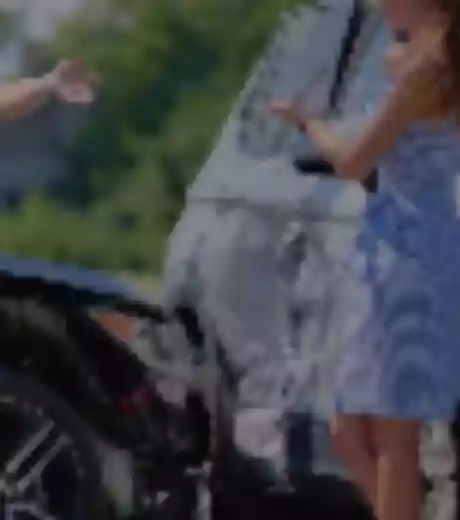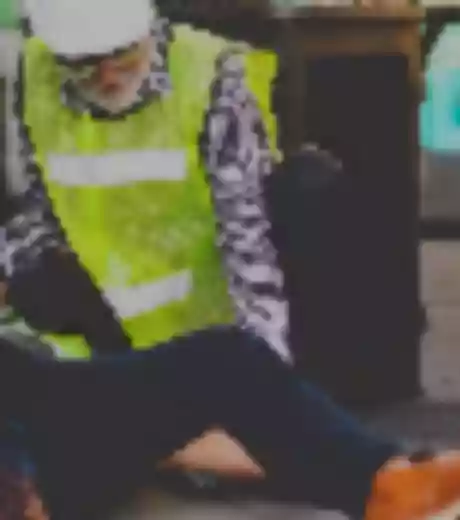
Crosswalk Laws in Connecticut
Crosswalk laws vary from state to state, so familiarizing yourself with local crosswalk laws and enacting best practices is important. In Connecticut, learning about the pedestrian walking laws, which were updated in 2021, can help keep you safe and out of legal trouble — as a driver and pedestrian.
What Are Crosswalk Laws in Connecticut
Pedestrians frequently navigate busy intersections throughout Connecticut, especially in active areas and cities, such as New Haven. These busy intersections can pose a risk for those on foot, especially since pedestrians are more vulnerable to dangerous roadways and distracted drivers, as they lack the protections of airbags and seatbelts. The vulnerable status of foot traffic is one reason Connecticut pedestrian laws exist.
Pedestrian laws can restrict either drivers or pedestrians. For example, driver restrictions include laws that stipulate drivers must give pedestrians the right of way, such as within a marked crosswalk. The laws restricting pedestrians, such as jaywalking regulations, are generally implemented to ensure pedestrians do not open themselves up to additional risks.
Connecticut's crosswalk law that went into effect in 2021 determines how drivers, pedestrians, cyclists, and others must react while using sidewalks or crossing a street. It addresses issues such as yielding to pedestrians in crosswalks and dooring (opening a vehicle door into the path of another road user).
Pedestrian Right of Way
Under the Connecticut crosswalk laws, pedestrians have the right of way in many scenarios, meaning the driver must yield to the pedestrian in these situations. Under the current Connecticut pedestrian walking laws, drivers who fail to yield (slow or stop their vehicle, as necessary) to pedestrians at crosswalks may receive fines of $500.
Currently, drivers must yield the right of way to pedestrians in specific scenarios, including the following:
- The pedestrian is within the crosswalk to any extent.
- The pedestrian moves to the crosswalk's curb and indicates their intent to cross by raising their arm or hand toward oncoming vehicles.
- The pedestrian shows their intent to cross by moving any part of their body or extension of their body — such as a cart, leashed dog, stroller, electric bicycle, or walking stick — into the crosswalk's entrance.
Generally, pedestrians have the right of way in crosswalks, and vehicles must slow or stop until the pedestrian has reached a "zone of safety" or fully crossed the street.
Connecticut law identifies various types of crosswalks:
- Crosswalks with electronic walk signs
- Crosswalks controlled by other signals, such as stop signs or traffic lights
- Crosswalks identified by special markings on the road or devices; these are often used near schools
Failing to yield the right of way to pedestrians in these situations could result in the driver's liability for resulting accidents, injuries, and other damages. Pedestrians who violate crosswalk laws can also receive fines and potentially risk being liable for resulting accidents.
Vehicle Right of Way
While pedestrians in Connecticut may frequently have the right of way at crosswalks, this privilege does not apply to all roadways or situations. For example, emergency vehicles always have the right away if they indicate they are operating in an emergency by flashing their lights or using alarms and horns.
In crosswalks, non-emergency vehicles rarely have the right of way. One reason is that a vehicle can cause more damage than a pedestrian by failing to yield.
Marked Crosswalks vs. Unmarked Crosswalks
Although local law defines three crosswalks types, four are generally recognized: Marked or unmarked and controlled or uncontrolled.
Roads often indicate marked crosswalks with parallel white pavement markings painted across the road's crosswalk in the direction of traffic. These lines indicate to vehicular and foot traffic that a marked crossing exists. These marked crosswalks may be controlled or uncontrolled with signs or electronic signals. You can frequently find marked crosswalks in areas with regular foot traffic, such as schools, shopping districts, and places of worship.
In marked crosswalks, pedestrians have the ultimate right of way over all non-emergency vehicles, including those waiting to turn. Once a pedestrian displays their intent to cross, all traffic must stop or slow until they reach the other side or a safety zone.
The rules in local unmarked crosswalks are entirely different. A pedestrian attempting to cross at an unmarked crosswalk must yield the right of way to all oncoming traffic.
Additionally, pedestrians must yield the right of way to vehicles if they cross a road where a pedestrian tunnel is provided. Pedestrians must also stay to the right during their crossing movements.
Jaywalking
According to local pedestrian crossing laws, jaywalking is illegal in Connecticut. Pedestrians are not allowed to cross a roadway intersection diagonally unless immediately authorized by a control signal or police officer. Pedestrians are not allowed to enter a crosswalk so quickly that it creates a hazardous situation where oncoming vehicles do not have time to slow down or stop.
One reason Connecticut banned jaywalking is because of injuries among pedestrians. Drivers know to watch for pedestrians at marked and unmarked crosswalks. However, a driver is unlikely to slow every time a pedestrian approaches a roadway without an official crosswalk.
Pedestrian Safety Tips
As a driver or a pedestrian, it is best to remain aware of your surroundings. Use the following safety tips to protect yourself physically and legally:
- As a pedestrian, be aware of the speed limit where you are crossing to ensure the drivers will have enough warning to stop for you.
- In certain scenarios, an inebriated pedestrian can cause as much damage as a drunk driver. Be extra aware if you drive through bar districts on nights, weekends, or holidays.
- Pedestrians should always check before stepping into a crosswalk, even if it is marked and signaling that it is safe to walk. Drivers should be extra alert around crosswalks and watch for pedestrians.
What To Do if You're Hit While Crossing
If a driver hits you while crossing a lane at an official crosswalk, you should seek immediate medical attention if you are seriously hurt. If your injuries are less severe, taking specific actions at the scene can make your life easier later on:
- Call the police and file a police report
- Collect the driver's information
- Take pictures of the scene, including the vehicle that hit you, the area, and your injuries
- Collect the information of any witnesses
- Get medical attention even if you feel okay; sometimes, injuries can lie latent for weeks or months before arising
- Contact a pedestrian accident lawyer to discuss your case
The lawyers at Kennedy, Johnson, Schwab & Roberge can help you determine your best course of action after a pedestrian crossing accident. Contact us today to schedule your free initial consultation.
Get in Touch
Schedule a Free Initial Consultation
At Kennedy, Johnson, Schwab & Roberge, P.C., we handle all cases on a contingency fee basis. This means that we do not get paid unless and until you receive a settlement or a jury award.
Schedule a free, confidential consultation with a skilled Connecticut personal injury lawyer today.








